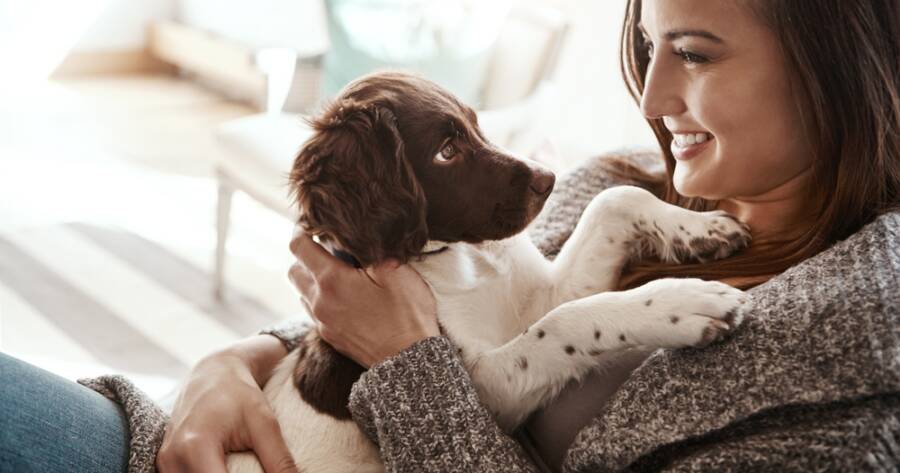Dogs experience emotions just like people, and anxiety is more common than many pet owners realize. From subtle shifts in behavior to clear signs of distress, anxious dogs often struggle silently unless we know what to look for. Understanding the signs of canine anxiety and how to respond with patience and care can make a big difference in your dog’s quality of life. With the right support, your pup can feel safe, secure, and more at ease every day.
Recognizing Common Physical Signs
Anxiety in dogs often shows up through physical behaviors. You might notice excessive panting, pacing, trembling, or drooling, even when it’s not hot or your dog hasn’t been active. Some anxious dogs will lick their lips, yawn repeatedly, or shake off as if they’re wet, all signs that they’re feeling nervous or unsure.
Changes in posture are another clue. A tucked tail, lowered ears, or cowering stance can all indicate discomfort. Pay attention to these subtle cues, especially if they happen in specific situations like during thunderstorms, car rides, or when left alone. The earlier you spot them, the sooner you can start helping your pup feel more at ease.
Behavioral Changes That Signal Stress
If your dog suddenly becomes clingy, withdrawn, or unusually restless, anxiety could be the cause. Some dogs develop destructive habits like chewing furniture, digging at doors, or excessive barking when they’re feeling overwhelmed. Others might avoid eye contact, refuse food, or pace constantly.
You may also notice increased sensitivity to sound or changes in social behavior, like avoiding people or becoming more reactive to other pets. These changes can seem like “bad behavior” at first, but they’re often your dog’s way of coping with discomfort. Identifying the root cause can help guide the right solution, whether it’s environmental, emotional, or health-related.
Separation Anxiety Warning Signs
One of the most common types of canine anxiety is separation anxiety. Dogs with this issue may whine, bark, scratch at doors, or have accidents in the house shortly after being left alone. Even if they’ve been house-trained for years, these signs can emerge when they’re experiencing distress.
Some dogs also become overly excited or anxious before you leave, following you from room to room and displaying nervous behaviors as soon as they sense a change in routine. Recognizing separation anxiety early allows you to work on desensitizing your dog to departures, helping them feel calmer and more confident when home alone.
How to Create a Calming Environment
A stable, peaceful environment can do wonders for an anxious dog. Create a designated safe space in your home where your pup can retreat when they’re overwhelmed. This might be a quiet corner with their bed, favorite toy, or even a covered crate that offers a sense of security.
Using calming tools like white noise machines or anxiety wraps can further reduce stress levels. Maintaining a consistent daily routine also helps dogs feel secure, as they thrive on predictability. The more your dog knows what to expect, the less likely they are to feel anxious during transitions or unexpected events.
The Role of Exercise and Mental Stimulation
Physical activity is a powerful tool for managing anxiety. Regular walks, playtime, and off-leash exercise (if safe) help release pent-up energy and promote overall emotional balance. Exercise also boosts feel-good hormones, which naturally reduce stress in dogs.
Mental stimulation is just as important. Puzzle toys, scent games, and obedience training sessions keep your dog’s mind busy and prevent boredom, which often contributes to anxious behavior. A tired dog (both mentally and physically) is generally a calmer, more content companion. Providing a variety of enriching experiences helps reduce stress and builds your dog’s confidence.
When to Seek Professional Help
If your dog’s anxiety is severe or not improving with at-home changes, it may be time to consult your vet or a certified dog behaviorist. They can help rule out medical causes, recommend behavior modification plans, or discuss whether medication could be beneficial in managing your dog’s symptoms.
Professional trainers who specialize in fear and anxiety can guide you through tailored exercises to build your dog’s confidence and reduce stress triggers. Every dog is different, and a customized approach often yields the best results, especially when anxiety is impacting your dog’s daily life.
Helping Your Dog Feel Safe and Understood
Anxiety isn’t something your dog can control—but with your help, they can learn to navigate their world with more confidence. By recognizing the signs early, creating a calm environment, and meeting their mental and physical needs, you offer comfort and stability that goes a long way. Whether it’s separation anxiety or general nervousness, your support makes all the difference. The more we understand our dogs’ emotions, the better we can help them live happy, secure lives.

